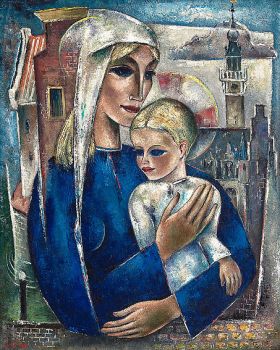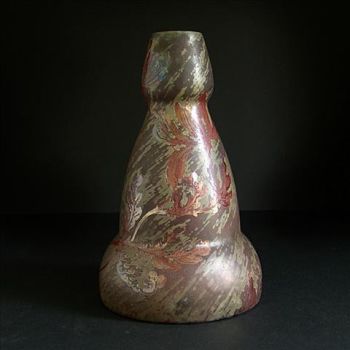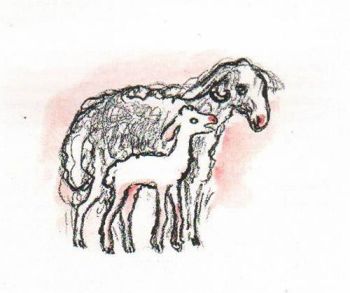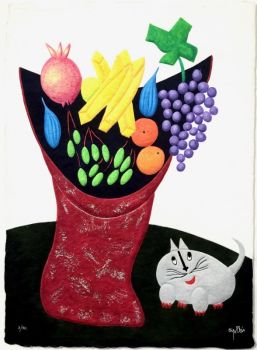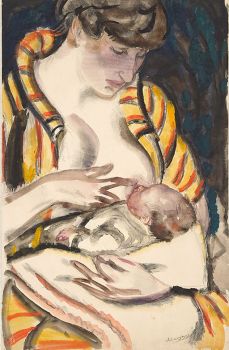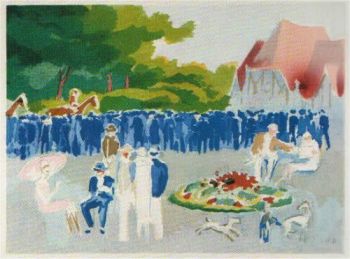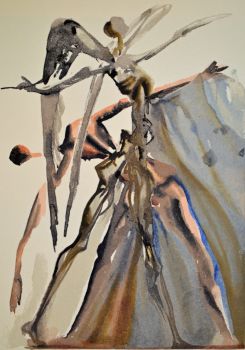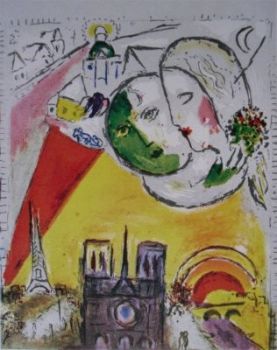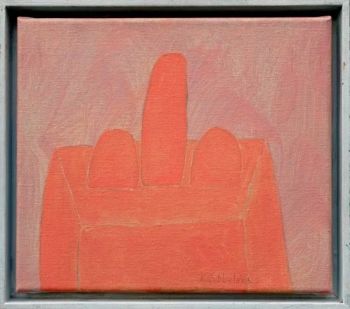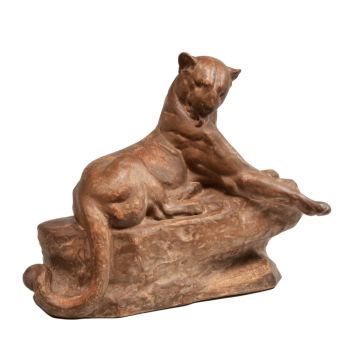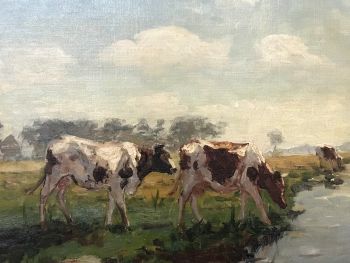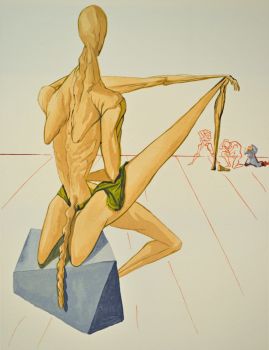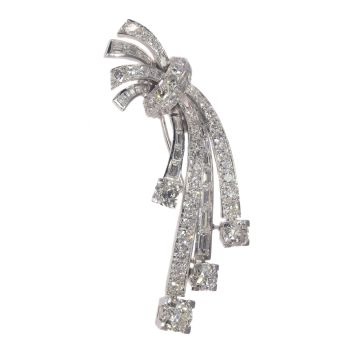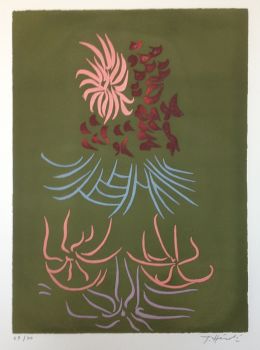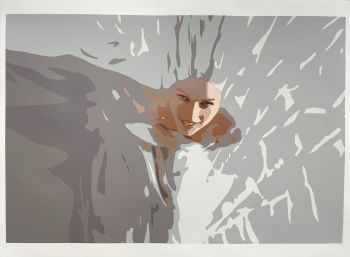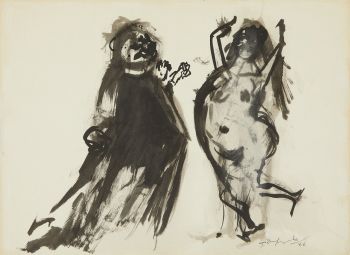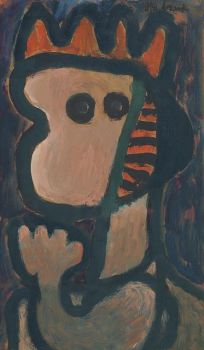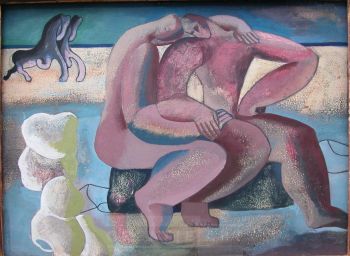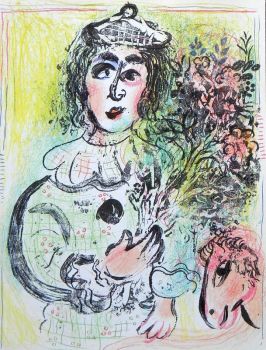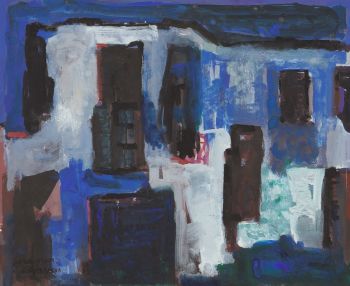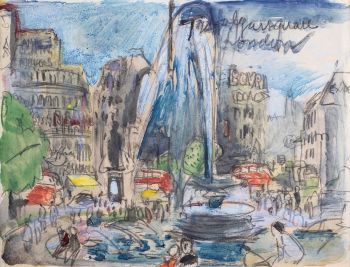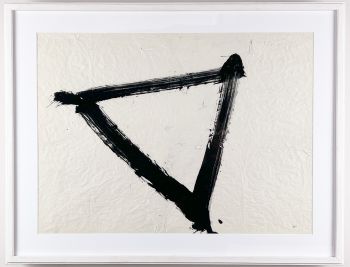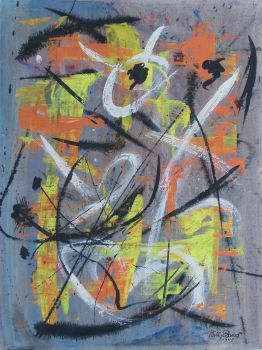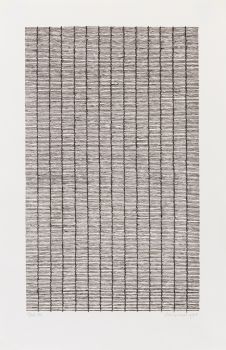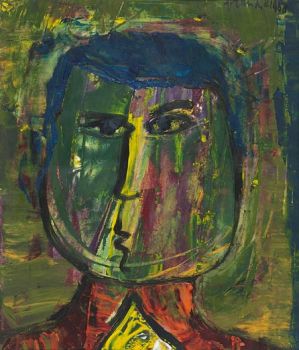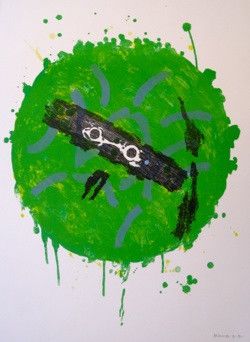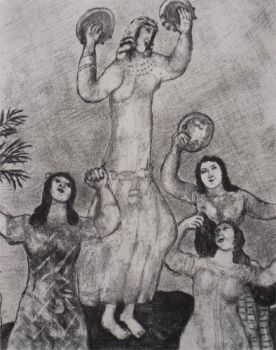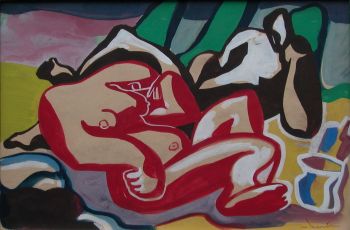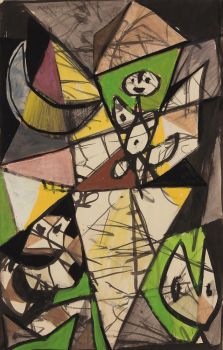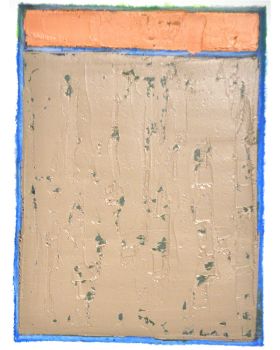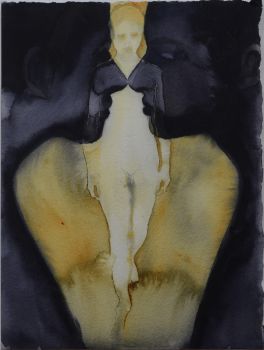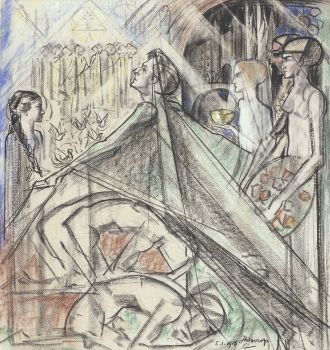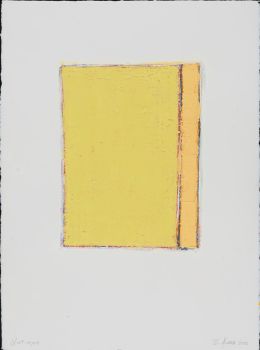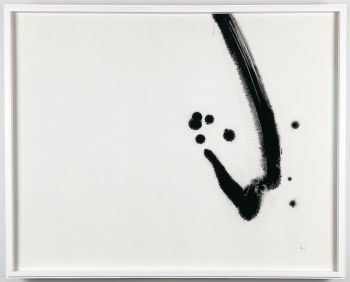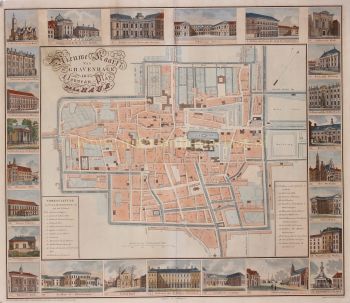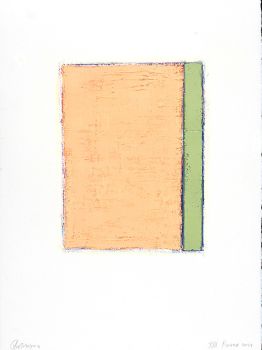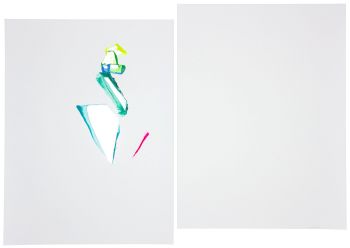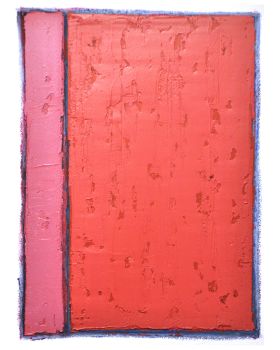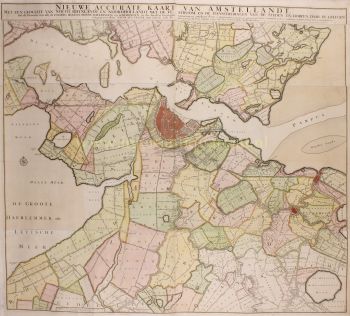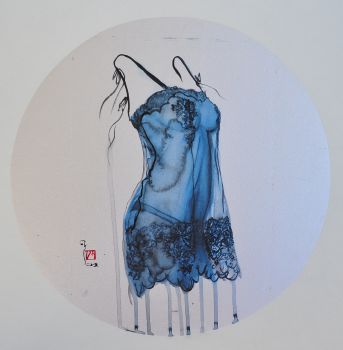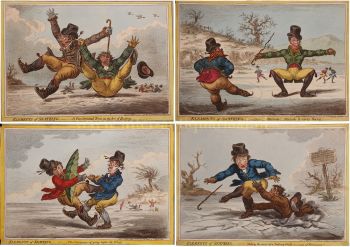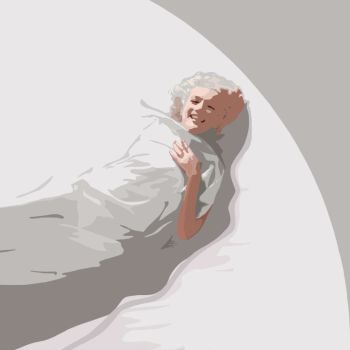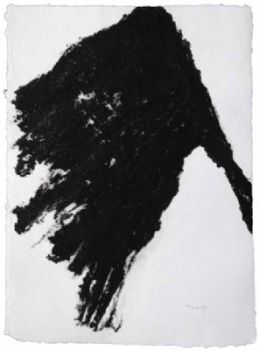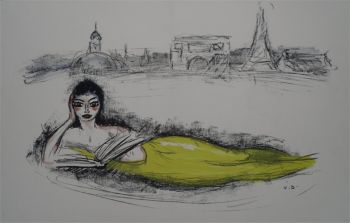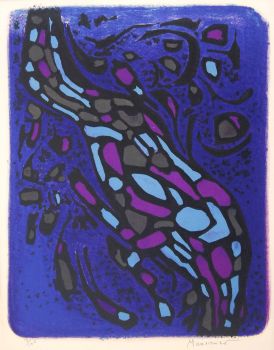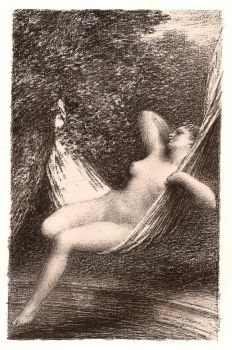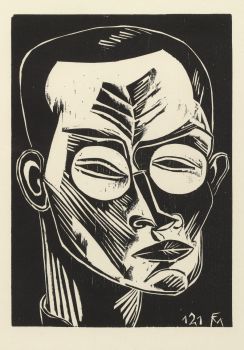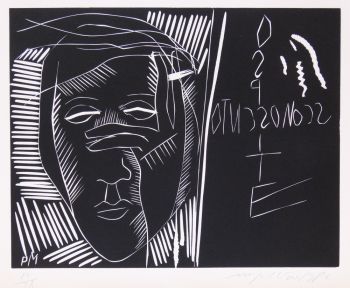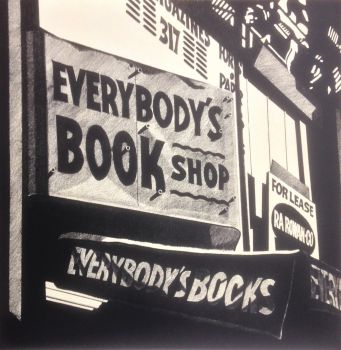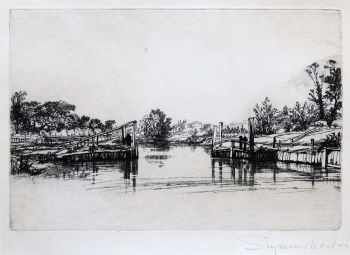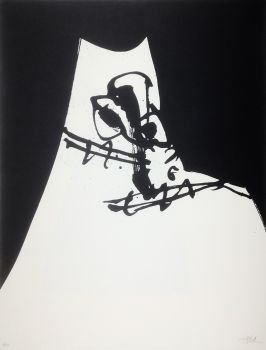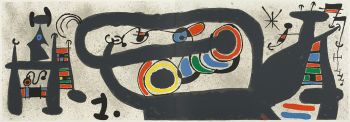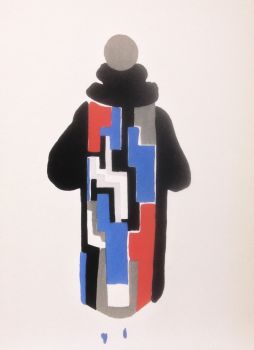Libons 1970
Werner Graeff
InchiostroCarta
65 ⨯ 50 cm
ConditionMint
Prezzo su richiesta
Hans den Hollander Prints
- A proposito di opere d'artemedium: linocut
edition size: 30 (13/30)
signature: lower right in pencil
Werner Graeff, born 24 August 1901 in Sonnborn, was a German sculptor, painter, graphic artist, photographer and inventor. Graeff graduated from high school in Berlin-Tegel. His first pictures were taken in an Impressionist style. Around 1919 he turned to Cubist forms. This style also influenced his early sculptures. From 1921 he was a student at the Bauhaus in Weimar. That same year he joined the De Stijl group and was from 1922 employees of the same journal.
He took a course at Stijl, Theo van Doesburg. Also in 1922 he participated in the "First International Congress Advanced Artist" of 29 to 31 May in Dusseldorf. Graeff was 1924 with Hans Richter and Piet Mondriaan, the Journal of Basic Design (abbreviated G). His first book was published in 1927 by Willi Baumeister. In the winter semester 1924/1925 Graeff began studying at the Technische Hochschule in Berlin-Charlottenburg, which he abandoned it for economic reasons. In the following years he turned more to writing, his artistic ambitions resigned. Mies van der Rohe in 1928 made him the chief propagandist of the exhibition The apartment in the Weißenhofsiedlung in Stuttgart.
He has published on behalf of the German Werkbund exhibition at the volumes of construction and housing and interiors. 1931/1932 was Graeff teacher of photography at the Reimann School in Berlin.
In 1936 he emigrated to Spain. The years of war and immediate postwar period Graeff lived as a teacher and a writer in Switzerland. From 1946 he developed there one of the first mini cameras in the world.
From 1950, he returned to painting. He was from 1951 to 1958 taught at the Folkwang School in Essen.
Graeff died unexpectedly on 29 August 1978 in Blacksburg, Virginia, USA.
The second by his wife Ursula Graeff deer managed estate of the artist in 2009 was bequeathed to the Museum Wiesbaden. - A proposito di opere artistaWerner Graeff, nato il 24 agosto 1901 a Sonnborn, è stato uno scultore, pittore, grafico, fotografo e inventore tedesco. Graeff si è diplomato al liceo a Berlino-Tegel. Le sue prime foto sono state scattate in stile impressionista. Intorno al 1919 si rivolse alle forme cubiste. Questo stile influenzò anche le sue prime sculture. Dal 1921 fu studente al Bauhaus di Weimar. Nello stesso anno entra a far parte del gruppo De Stijl e dal 1922 è dipendente della stessa rivista. Ha frequentato un corso a Stijl, Theo van Doesburg. Sempre nel 1922 partecipò al "First International Congress Advanced Artist" del 29-31 maggio a Dusseldorf. Graeff era il 1924 con Hans Richter e Piet Mondriaan, il Journal of Basic Design (abbreviato G). Il suo primo libro fu pubblicato nel 1927 da Willi Baumeister. Nel semestre invernale 1924/1925 Graeff iniziò a studiare alla Technische Hochschule di Berlino-Charlottenburg, che abbandonò per motivi economici. Negli anni successivi si dedicò maggiormente alla scrittura, le sue ambizioni artistiche si dimisero. Mies van der Rohe nel 1928 lo nominò il principale propagandista della mostra L'appartamento nella Weißenhofsiedlung di Stoccarda. Ha pubblicato per conto della mostra tedesca Werkbund sui volumi di costruzioni e abitazioni e interni. 1931/1932 fu insegnante di fotografia Graeff alla Reimann School di Berlino. Nel 1936 emigrò in Spagna. Gli anni della guerra e dell'immediato dopoguerra Graeff visse come insegnante e scrittore in Svizzera. Dal 1946 vi sviluppò una delle prime mini fotocamere al mondo. Dal 1950 torna alla pittura. Dal 1951 al 1958 insegnò alla Folkwang School di Essen. Graeff morì improvvisamente il 29 agosto 1978 a Blacksburg, Virginia, USA.
Sei interessato ad acquistare questa opera d'arte?
Artwork details
Categoria
Stile
Materiale e Tecnica
Colore
Related artworks
 A cura di
A cura diGallerease Magazine
1 - 4 / 24Marc Chagall
Le clown fleuri - The clown with flowers1963
Prezzo su richiestaHans den Hollander Prints
1 - 4 / 24Rene Rietmeyer
TOKYO - Kudan House - January 2021 #062021
Prezzo su richiestaEuropean Cultural Centre Collection
Rene Rietmeyer
TOKYO - Kudan House - January 2021 #052021
Prezzo su richiestaEuropean Cultural Centre Collection
1 - 4 / 24- 1 - 4 / 12





